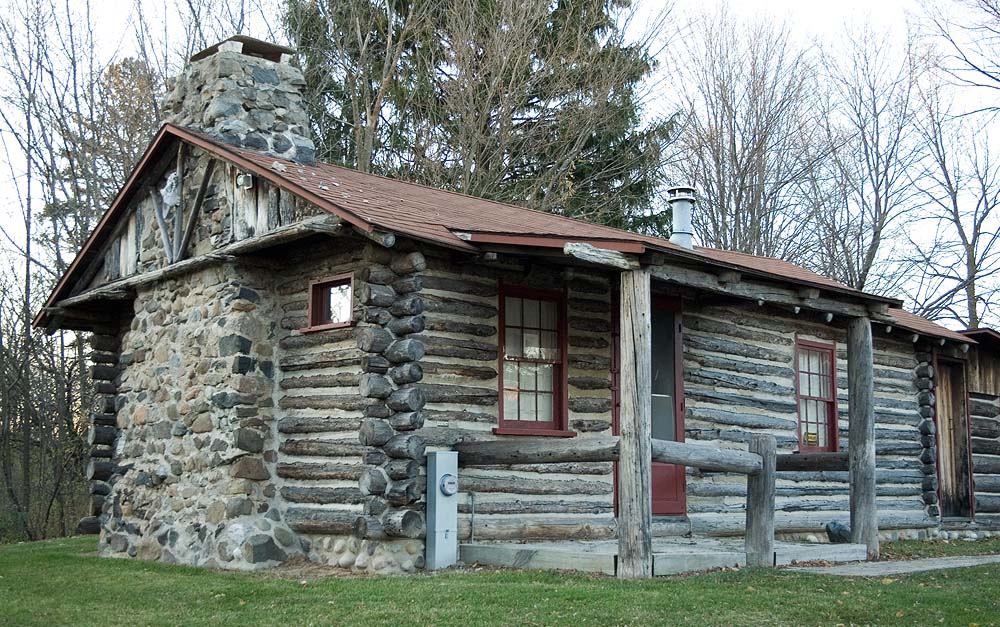
W. Ben Hunt
From Wikipedia, the free encyclopedia
Walter Bernard “Ben” Hunt (March 13, 1888 – March 30, 1970) “was an American artist, outdoor educator and author” whose books and articles covered topics such as “Native American arts and performance, woodworking, whittling, scoutcraft, pioneering, jewelry making, metalworking, and calligraphy.”
Hunt was born in Greenfield, Wisconsin and grew up in a log cabin. He attended Milwaukee’s South Division High School, but did not graduate, dropping out to become “a lithographic engraver(now graphics designer) at the Bruce Publishing Company.” Hunt moved to Hales Corners, Wisconsin with his wife, Laura, in 1920. In 1924, Hunt, along with his father-in-law and brother,Edwin C. Hunt, built a log cabin behind his home. The cabin, “a 16x28-foot structure” made of tamarack logs, was the subject of Hunt’s first article, “How We Built Our Log Cabin.” During the late 1930s, Hunt began to study the work of Native American artists. As part of his research, Hunt met with artists and leaders such as Nick Black Elk, Frank Smart (or Chief Gogeoweosh), and James F. "Buck" Burshears. Hunt shared his knowledge of "Indian lore" with Milwaukee's boy scout leaders and, in 1942, Hunt started writing articles for Boy's Life. He became a regular member of its staff, ultimately writing "over 1,000 articles, an average of three to four per issue." Hunt's work for Boy's Life, led him to serve on the staff of the National Boy Scout Jamboree in 1950, 1953, 1957, and 1960.
 |
| Hunt's handmade log cabin |
THE BEN HUNT CABIN
The main cabin (16 x 28 foot) was built during the
summer of 1924. Ben Hunt, his brother, and father-in-law built it on Hunt's
property on Janesville Road. They used only hand tools, beginning with sawing
the logs to size right up to nailing down the last shingle. The main cabin was
built of tamarack logs. Over the years additions were built from utility
poles. The cabin became a gathering place for Ben's friends to socialize and
pursue their hobbies. Young people were welcomed to learn from Ben and share
his interests.
In 1986, the Ben Hunt cabin
was moved one-third of a mile from its original site. It is now located
southwest of the Hales Corners library on the grounds of the W. Ben Hunt Center
(5885 S. 116th Street, Hales Corners) and is owned by the Village of Hales
Corners. The Hales Corners Historical Society is responsible for the
preservation and upkeep of the cabin, and members of the Society serve as cabin
guides. The cabin contains interesting artifacts and memorabilia related to Ben
Hunt and native people. In January
2005, the cabin was designated a local historic landmark through the efforts of
the Hales Corners Historic Preservation Commission.
Dugout Canoe is on
Display
On display in the cabin is a dugout canoe made by W.
Ben Hunt. Hunt made the canoe in 1945 from a basswood tree found near
"Mud"(Upper Kelly) Lake. The canoe was made from a 14-foot length of the tree
trunk which weighed one ton. Digging out the interior of the log was
accomplished using an axe, adz, and Indian crooked knife. When it was finished,
the canoe weighed only 175 pounds.
In June 1998 the canoe was donated to the Hales
Corners Historical Society by Wayne Boldt. The canoe had previously been in the
possession of Boldt's late father, Alton Boldt, who was a close friend of Ben
Hunt. Stop by the cabin and see this interesting artifact!

How to Build and Furnish a Log Cabin The Easy, Natural Way Using Only Hand Tools and the Woods Around You
http://en.wikipedia.org/wiki/W._Ben_Hunt
http://www.historichalescorners.org/hchs4.htm




No hay comentarios:
Publicar un comentario